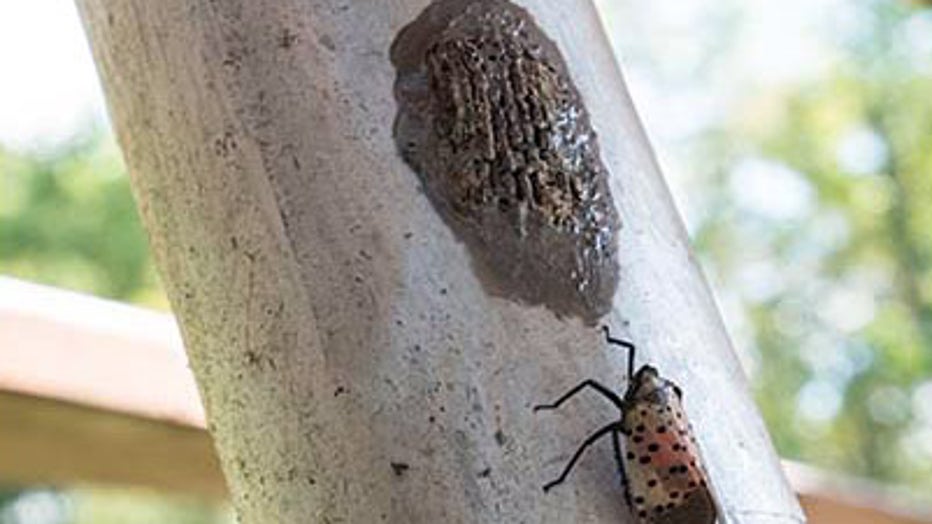USDA again asks for help squashing these invasive bugs
Invasive spotted lanternfly taking over the Northeast
States from New York to North Carolina are issuing quarantines for the spotted lanternfly, an invasive, plant-killing pest.
LOS ANGELES - Once again, the U.S. government urges individuals to act against certain insect pests.
Not all bugs. Just a few particular invasive species, such as the spotted lanternfly and the spongy moth, threaten fruit crops and trees in the United States, according to the U.S. Department of Agriculture (USDA).
Last year, Americans were asked to destroy any eggs or insects they found. The Department of Agriculture is again asking residents to be vigilant for spongy masses emerging outdoors "to help stomp out invasive pests this spring."
These spongy masses, identified as the eggs of the spotted lanternfly and gypsy moth, are described as "invasive insects with significant economic and environmental impacts," according to a notice released by the USDA earlier this month.

File: A spotted lanternfly egg mass and an adult. (USDA photo)
These masses have the capability to hitch a ride on various modes of transportation such as trucks, cars, trains, planes, and outdoor items, often going unnoticed, before relocating to different regions, the USDA cautioned.
"Invasive insects and plant diseases, such as the spotted lanternfly, spongy moth, citrus greening, and many others, cost the U.S. an estimated $40 billion each year in damages to crops, trees, and other plants," Kathryn Bronsky, national policy manager for the spongy moth at Animal and Plant Health Inspection Service (APHIS) said. "Together, we can make a difference."
Why you need to kill lanternflies
According to the USDA the spotted lanternfly and gypsy moth are highly detrimental invasive insects, causing significant economic and environmental harm.
Together, they target and damage hundreds of tree and plant species. Both species possess the ability to hitch a ride during their egg mass stage, attaching themselves to various modes of transportation like trucks, cars, trains, planes, and outdoor items, thus spreading to new areas undetected.

FILE - Indiana Department of Natural Resources compliance officer Vince Burkle holds an adult spotted lanternfly found in Huntington, Indiana, on Wednesday, Aug. 17, 2022.
Presently, the spotted lanternfly has been identified in 17 states, while the spongy moth has been sighted in 20. Preventing these pests from hitchhiking to new states is crucial in mitigating their spread.
How to spot lanternflies?
According to information provided by the USDA, spotted lanternfly egg masses exhibit a flattened, mud-like appearance. Conversely, spongy moth egg masses are characterized by their fuzzy texture, sponginess, and are typically found in cream or brown hues.
Per guidance from the USDA, the recommended method for dealing with these masses involves a process known as "smashing and scraping."
This entails carefully crushing the masses and transferring them into a sealed plastic bag, which should then be disposed of in municipal trash. Furthermore, the agency suggests that pressure washing can be employed as an alternative method for removing the masses from sturdy outdoor surfaces.

